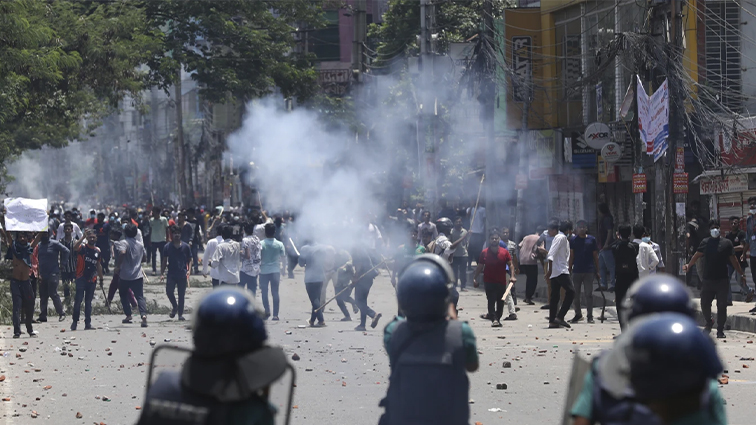Bangladesh is witnessing widespread unrest against the backdrop of student protests against the quota system in government jobs.
The Bangladeshi authorities issued a decision to stop the mobile Internet network throughout the country, in an attempt to ensure the security of citizens, according to what was stated by the Minister of Communications, Zunaid Ahmed Palak.
The events came after the University Grants Commission in Bangladesh ordered the closure of universities and the immediate evacuation of students from the buildings for security reasons. The decisions included the closure of secondary schools, colleges and other educational institutions.
The roots of these protests go back to the quota system in government jobs, which allocates 56% of these jobs to specific groups.
This system includes 30% for family members of freedom fighters who participated in the war of independence from Pakistan in 1971, 10% for women, 10% for people from underdeveloped areas, 5% for indigenous people, and 1% for people with disabilities.
The system is considered controversial, as its critics see it as preferable to children of pro-government groups that support Prime Minister Sheikh Hasina, which prompted students to protest, especially with high unemployment rates among youth, as there are approximately 32 million young people unemployed or outside the educational system out of the total population. 170 million people.
The protests turned violent this week after clashes between demonstrators and members of the student wing of the ruling Awami League party, prompting police to use rubber bullets and tear gas to disperse the demonstrators.
Riot control forces and border guard paramilitary forces were deployed to maintain security at universities throughout the country.
For his part, United Nations Secretary-General Antonio Guterres called on the government of Bangladesh to protect demonstrators from all forms of threats or violence, according to a statement by his spokesman Stephane Dujarric.
Nigeria… President calls for end to protests amid escalating violence
